Mechanical Properties and Very High Cycle Fatigue Behavior of Peak-Aged AA7021 Alloy
Abstract
1. Introduction
2. Experimental Procedure
3. Results
3.1. Optimization of Heat Treatment Condition of AA7021
3.2. Optical Micrographs of AA7021 Alloy
3.3. Phase Analysis
3.4. Tensile Test of AA7021 Alloy
3.5. High-Cycle Fatigue Test of AA7021 Alloy
4. Discussion
5. Conclusions
- (1)
- The hardness after the solution treatment was reduced as compared with as-cast, and the hardness increased with aging treatment. The hardness after aging of 32 h showed the highest value of 148 HV, and it gradually decreased after 32 h of aging. In particular, the grain size during aging treatment was reduced by 20 μm compared to that of the as-cast specimen, and the Mg-Zn intermediate peak was confirmed from XRD.
- (2)
- The peak-aged specimen showed higher UTS than the as-cast one by 90 MPa, higher yield strength by 50 MPa and the elongation was doubled to 12%.
- (3)
- The yield strength and the modulus of resilience due to the peak aging treatment were higher than those of the solution-treated specimen, which could be expected to lead to higher fatigue life, as the yield strength and the modulus of resilience are related to the fatigue strength.
- (4)
- At the high stress amplitude zone, the crack initiation site was visible at the small edge of the surface, and it was widely distributed at the low stress amplitude zone, which is in the very high cycle region.
Author Contributions
Funding
Conflicts of Interest
References
- Lendvai, J. Precipitation and strengthening in aluminium alloys. Mater. Sci. Forum 1996, 217, 43–56. [Google Scholar] [CrossRef]
- Zandbergen, M.W.; Cerezo, A.; Smith, G.D.W. Study of precipitation in Al–Mg–Si Alloys by atom probe tomography II. Influence of Cu additions. Acta Mater. 2015, 101, 149–158. [Google Scholar] [CrossRef]
- Miao, W.F.; Laughlin, D.E. Effects of Cu content and preaging on precipitation characteristics in aluminum alloy 6022. Metal. Mater. Trans. A 2000, 31, 361–371. [Google Scholar] [CrossRef]
- Rana, R.S.; Purohit, R.; Das, S. Reviews on the influences of alloying elements on the microstructure and mechanical properties of aluminum alloys and aluminum alloy composites. Int. J. Sci. Res. Publ. 2012, 2, 1–7. [Google Scholar]
- Nolan, R.A.; Kulas, M.-A.; Prangnell, P.B.; Quita da Fonseca, J. The Effect of Temperature on the Formability of a High Strength Aluminium Automotive Alloy. In Proceedings of the MS&T′13, Montreal, QC, Canada, 27–31 October 2013. [Google Scholar]
- Grohmann, T. Forming of AMAG 7xxx series aluminium sheet alloys. In Proceedings of the New Developments in Sheet Metal Forming and New Developments in Hydroforming, Fellbach, Germany, 10–11 May 2016. [Google Scholar]
- Zhong, H.; Paul, R.; Yuri, E. Effect of alloy composition and heat treatment on mechanical performance of 6xxx aluminum alloys. Trans. Nonferrous Met. Soc. China 2014, 24, 2174–2178. [Google Scholar] [CrossRef]
- Ringer, S.P.; Hono, K. Microstructural evolution and age hardening in aluminium alloys: Atom probe field-ion microscopy and transmission electron microscopy studies. Mater. Charact. 2000, 44, 101–131. [Google Scholar] [CrossRef]
- ASTM International. Standard Test Method for Dynamic Young’s Modulus, Shear Modulus, and Poisson’s Ratio by Impulse Excitation of Vibration; ASTM International: West Conshohocken, PA, USA, 2002. [Google Scholar]
- Giménez, S.; Vleugels, J.; Van der Biest, O. In situ investigation of dewaxing and sintering of stainless-steel powder compacts by impulse excitation. Scr. Mater. 2008, 58, 985–988. [Google Scholar] [CrossRef]
- Heinz, S.; Eifler, D. Crack initiation mechanisms of Ti6Al4V in the very high cycle fatigue regime. Int J. Fatigue 2016, 93, 301–308. [Google Scholar] [CrossRef]
- Hansen, N. The effect of grain size and strain on the tensile flow stress of aluminium at room temperature. Acta Metall. 1977, 25, 863–869. [Google Scholar] [CrossRef]
- Hansen, N. Hall–Petch relation and boundary strengthening. Scr. Mater. 2004, 51, 801–806. [Google Scholar] [CrossRef]
- Kouzeli, M.; Mortensen, A. Size dependent strengthening in particle reinforced aluminium. Acta Mater. 2002, 50, 39–51. [Google Scholar] [CrossRef]
- Yonenaga, I.; Motoki, K. Yield strength and dislocation mobility in plastically deformed bulk single-crystal GaN. J. Appl. Phy. 2001, 90, 6539–6541. [Google Scholar] [CrossRef]
- Fleischer, R.L. Rapid solution hardening, dislocation mobility, and the flow stress of crystals. J. Appl. Phy. 1962, 33, 3504–3508. [Google Scholar] [CrossRef]
- Chai, G.; Zhou, N. Study of crack initiation or damage in very high cycle fatigue using ultrasonic fatigue test and microstructure analysis. Ultrasonics 2013, 53, 1406–1411. [Google Scholar] [CrossRef] [PubMed]
- Zuo, J.H.; Wang, Z.G. Han. E.H. Effect of microstructure on ultra-high cycle fatigue behavior of Ti–6Al–4V. Mater. Sci. Eng. A 2008, 473, 147–152. [Google Scholar] [CrossRef]
- Ahn, D.G.; Amanov, A.; Cho, I.S.; Shin, K.S.; Pyoun, Y.S.; Lee, C.S.; Park, I.G. Gigacycle fatigue behavior by ultrasonic nanocrystalline surface modification. J. Nanosci. Nanotechnol. 2012, 12, 5902–5906. [Google Scholar] [CrossRef] [PubMed]
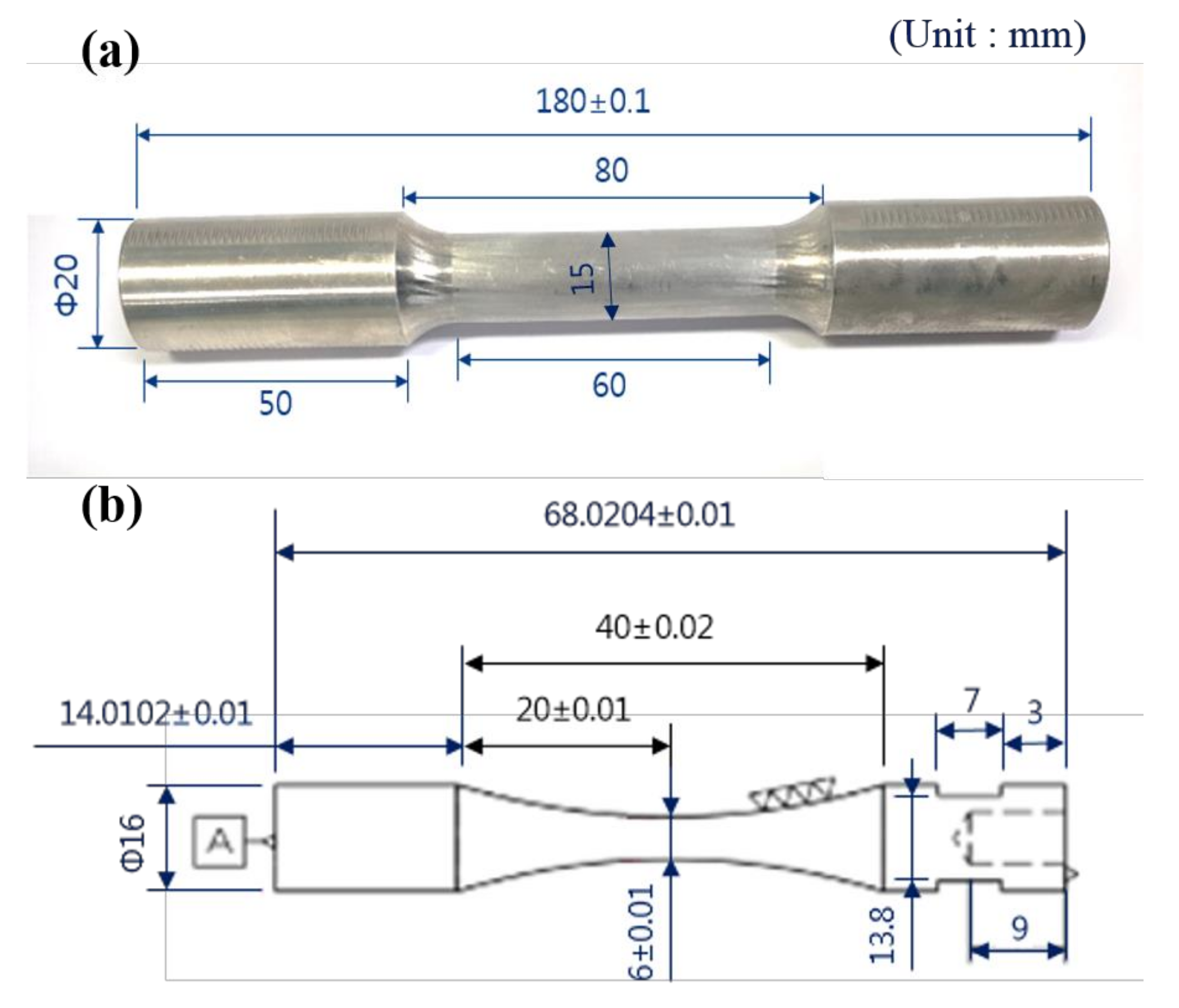
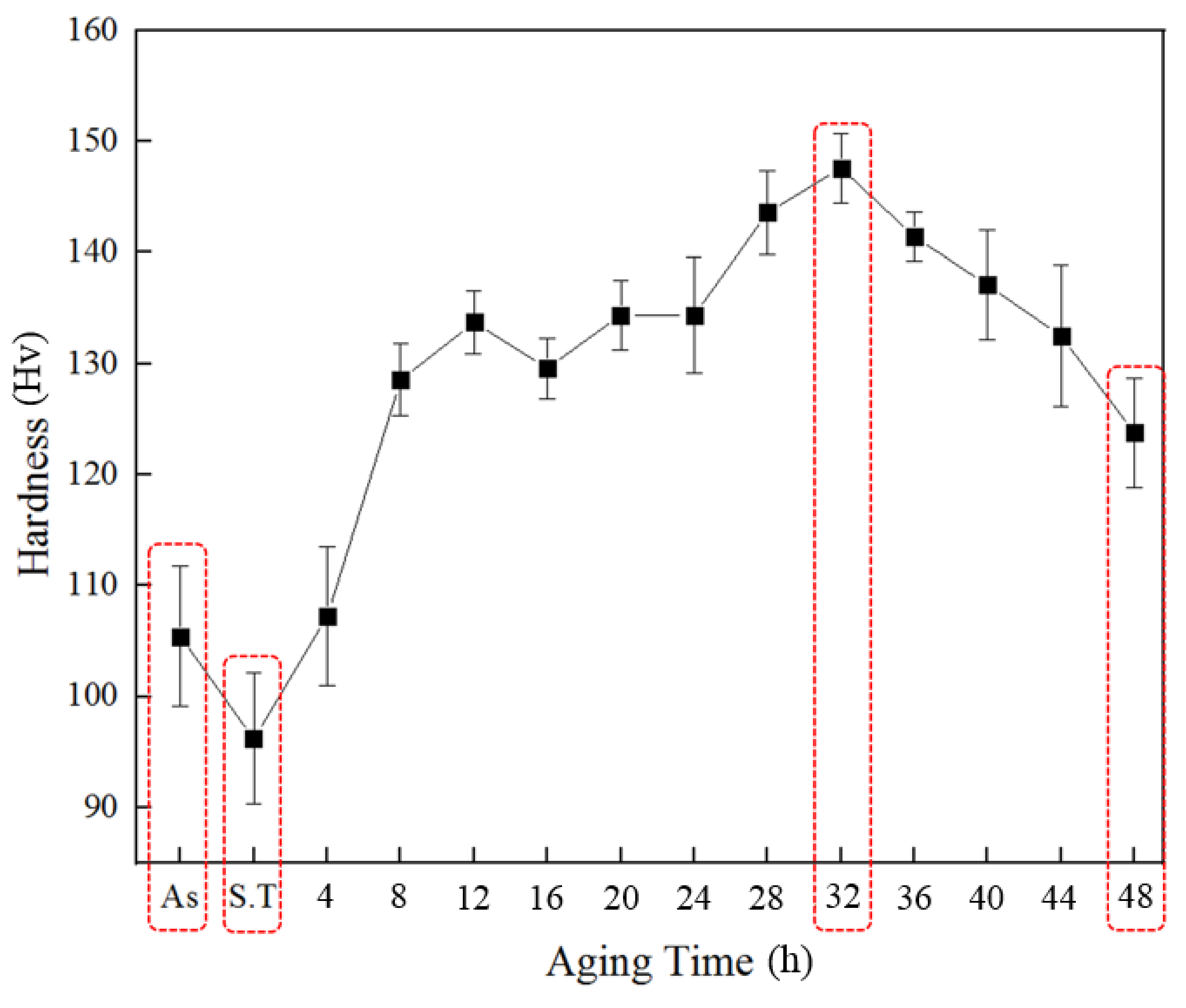
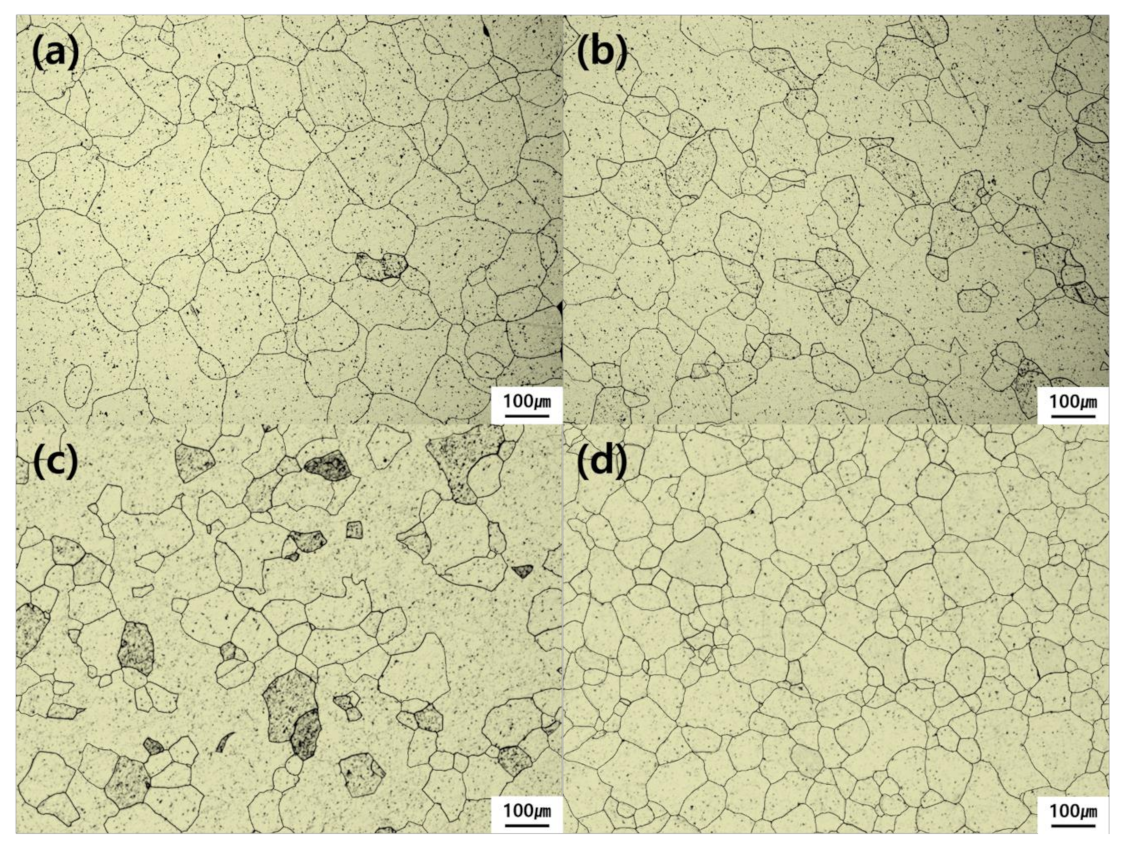
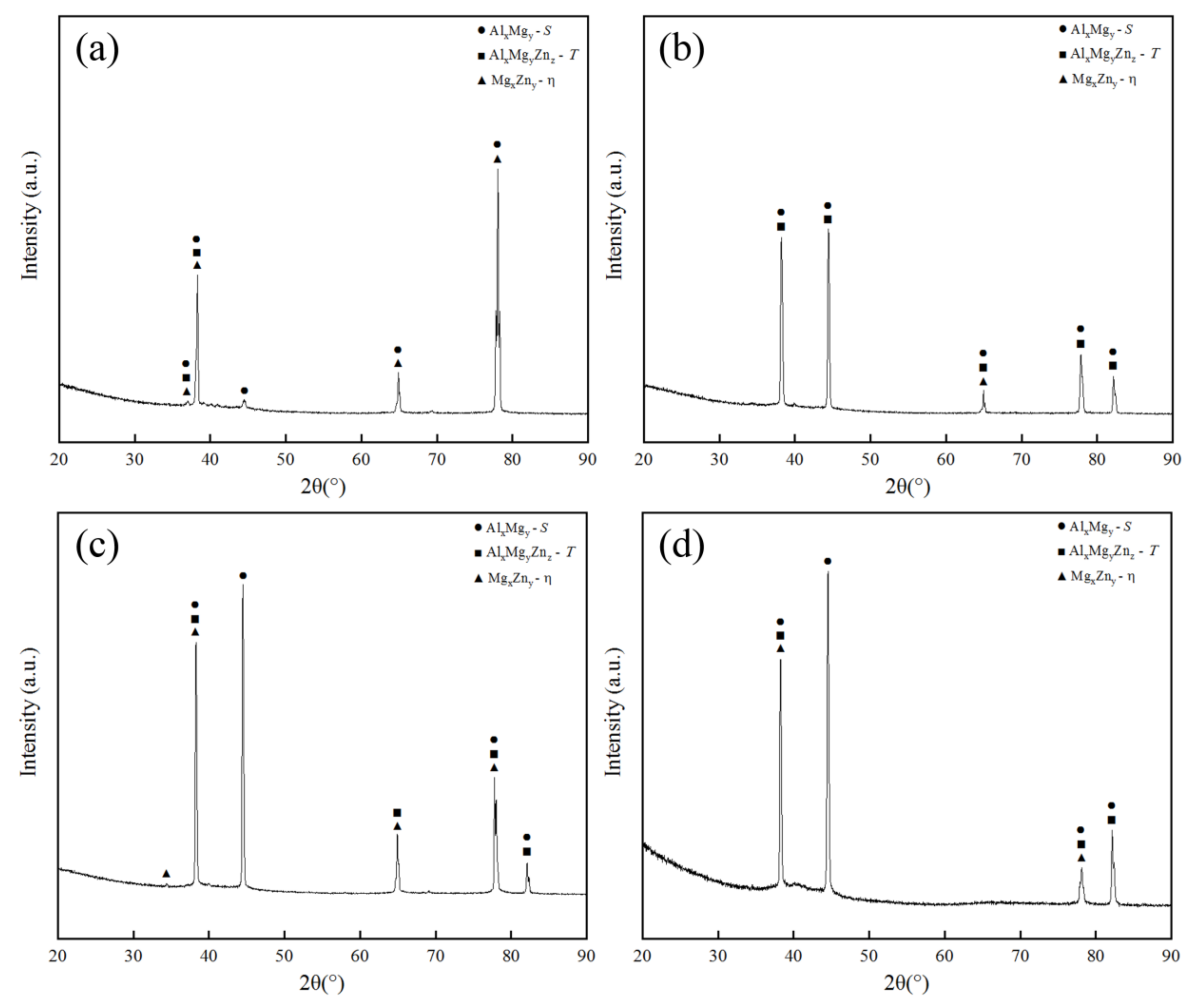
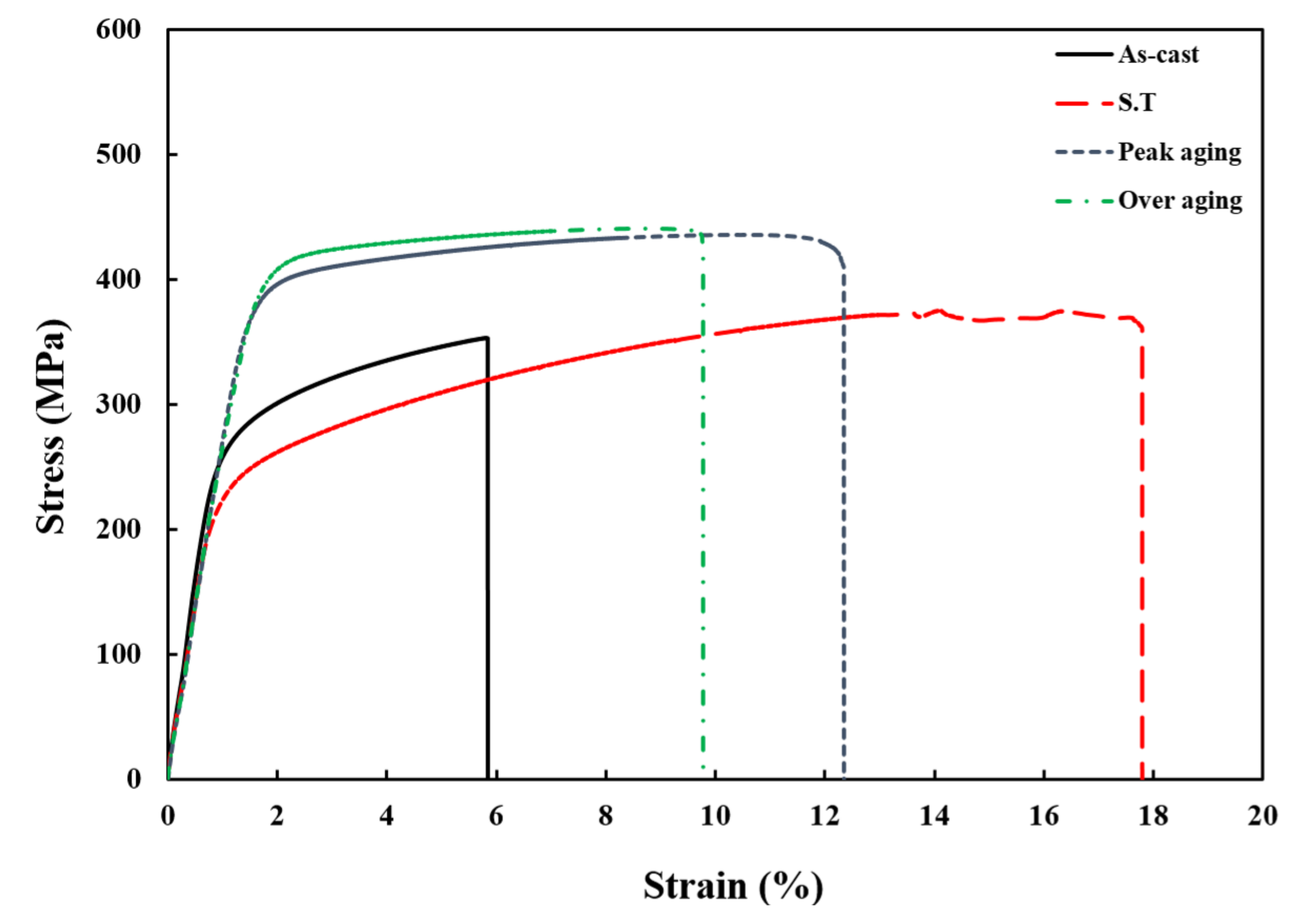
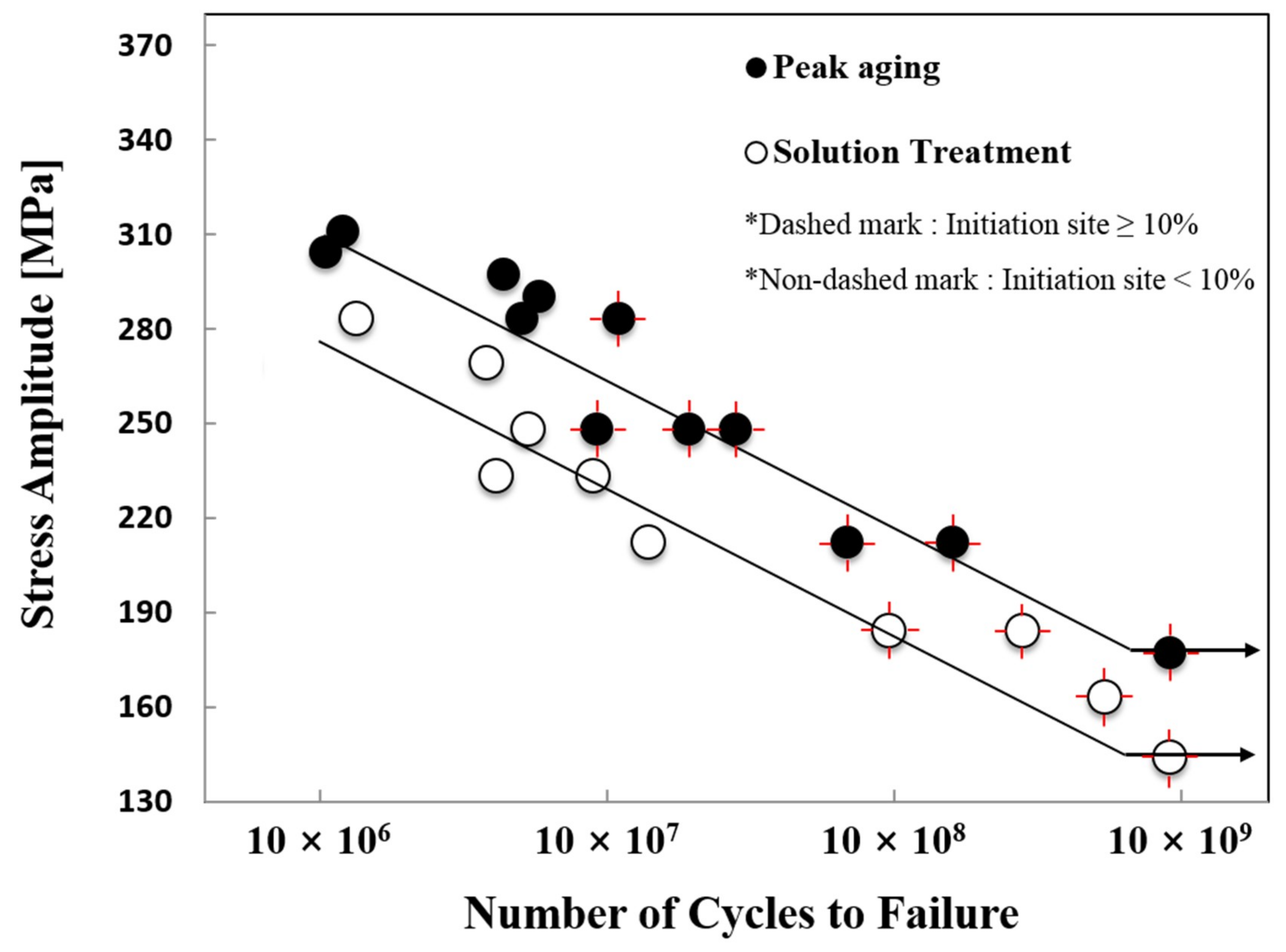
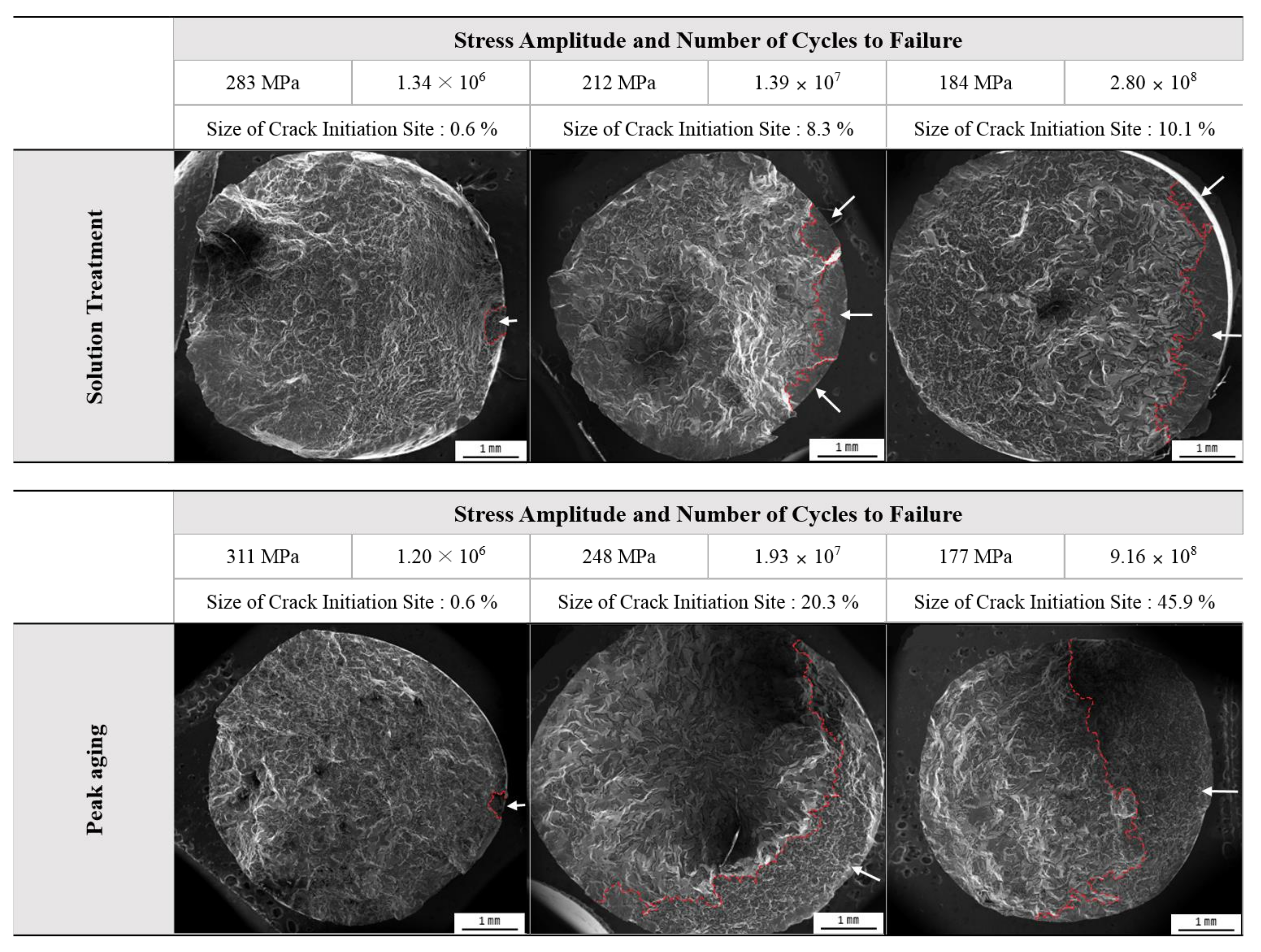
| Heat Treatment | Tensile Strength | Elongation | Modulus of Elasticity | Yield Strength (0.2% Off-Set) | Strain Energy Density | Modulus of Resilience |
|---|---|---|---|---|---|---|
| MPa | % | GPa | MPa | J/mm3 | J/mm3 | |
| As-cast | 352.64 | 5.84 | 69.52 | 244.94 | 17.40 | 1.29 |
| Solution Treatment | 375.18 | 17.81 | 69.67 | 202.14 | 57.93 | 0.86 |
| Peak Aging | 438.75 | 12.37 | 69.25 | 295.41 | 48.93 | 1.65 |
| Over Aging | 440.01 | 9.78 | 69.65 | 310.18 | 38.53 | 1.98 |
© 2018 by the authors. Licensee MDPI, Basel, Switzerland. This article is an open access article distributed under the terms and conditions of the Creative Commons Attribution (CC BY) license (http://creativecommons.org/licenses/by/4.0/).
Share and Cite
Lee, B.-H.; Park, S.-W.; Hyun, S.-K.; Cho, I.-S.; Kim, K.-T. Mechanical Properties and Very High Cycle Fatigue Behavior of Peak-Aged AA7021 Alloy. Metals 2018, 8, 1023. https://doi.org/10.3390/met8121023
Lee B-H, Park S-W, Hyun S-K, Cho I-S, Kim K-T. Mechanical Properties and Very High Cycle Fatigue Behavior of Peak-Aged AA7021 Alloy. Metals. 2018; 8(12):1023. https://doi.org/10.3390/met8121023
Chicago/Turabian StyleLee, Byung-Hoon, Sung-Woo Park, Soong-Keun Hyun, In-Sik Cho, and Kyung-Taek Kim. 2018. "Mechanical Properties and Very High Cycle Fatigue Behavior of Peak-Aged AA7021 Alloy" Metals 8, no. 12: 1023. https://doi.org/10.3390/met8121023
APA StyleLee, B.-H., Park, S.-W., Hyun, S.-K., Cho, I.-S., & Kim, K.-T. (2018). Mechanical Properties and Very High Cycle Fatigue Behavior of Peak-Aged AA7021 Alloy. Metals, 8(12), 1023. https://doi.org/10.3390/met8121023





